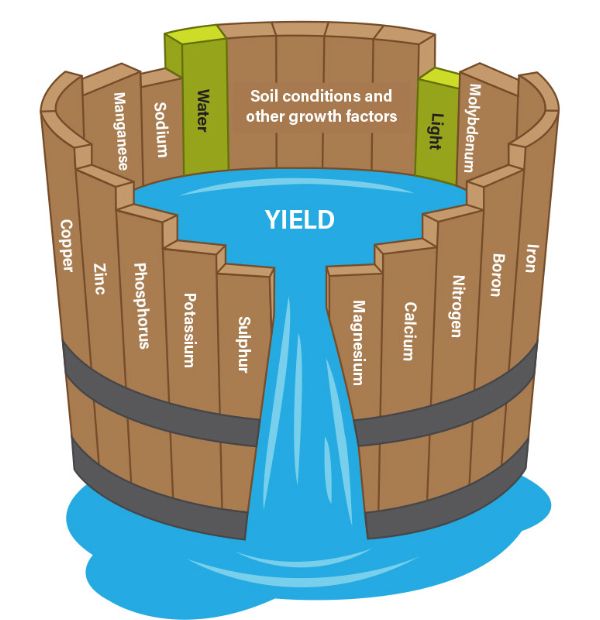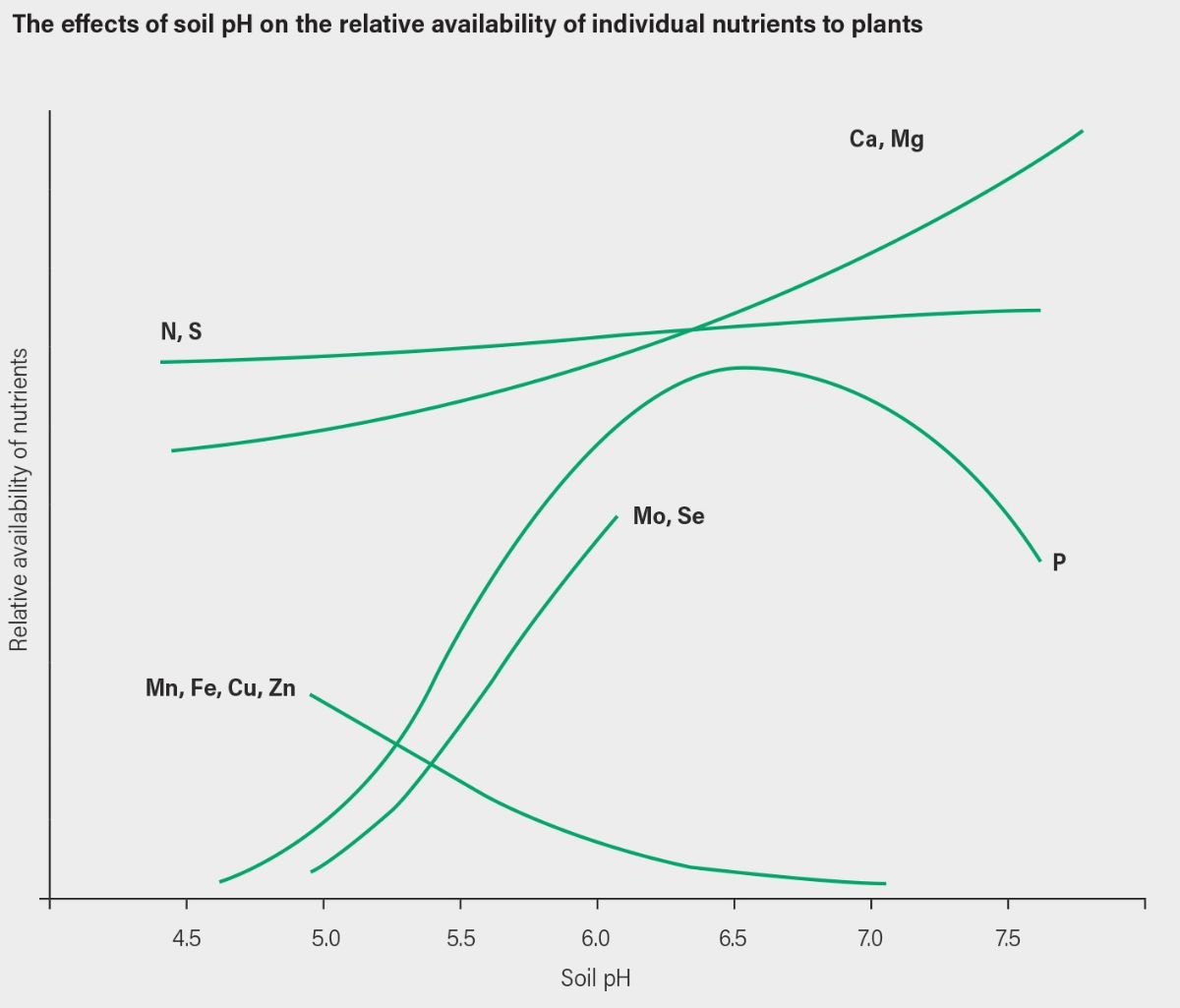
Soil Fertility
Soil Fertility
Soil Structure and Organic Matter
Soil structure can have a determining influence on crop growth. To allow easy plant root growth the soil structure needs to be of a particular size, shape and packing to maintain the necessary balance of air and water in the soil. Appropriate soil bed preparation is essential for ensuring good crop growth. Soil is made up of inorganic mineral particles, organic matter (including living organisms), air and water. Soil aggregates are a mixture of sand and silt bound together by clay, organic matter and other soil components.
A plant’s ability to get water and nutrients from the soil is largely controlled by the number and length of its roots. The rate of root growth (between 1 mm and 50 mm/day) depends on soil temperature, soil moisture, soil aeration and soil strength (a soil’s resistance to penetration). Roots prefer to grow through existing cracks and pore spaces in the soil and grow between soil aggregates. Roots and essential soil microorganisms need oxygen to grow and root growth will stop when soil aggregates are packed too tightly and soil pores are smaller than a certain size (less than 0.2 mm). This is commonly observed when soils are compacted due to stock pressure during wet weather and/or heavy machinery.
Soil Fertility
The fertility level of a soil is influenced by many factors: underlying parent material, amount of organic matter, paddock history, previous nutrient application and frequency of stock grazing. All these variables influence how nutrients are stored in the soil and then how they become available to the plant. Nutrient requirements are different for specific crops and it is important to understand the existing fertility status of a paddock before planting a new crop.
Taking a soil test prior to planting the crop, allows you time to apply nutrients to adjust soil fertility and remedy existing nutrient deficiencies. Crop yield is often limited when an essential nutrient is deficient, even when other nutrients are in sufficient supply (as demonstrated in the image below).
In the 19th century, the German scientist Justus von Liebig formulated the “Law of the Minimum,” which states that if one of the essential plant nutrients is deficient, plant growth will be poor even when all other essential nutrients are abundant.
Macronutrients are nutrients required by plants in large quantities for optimal growth: nitrogen (N), phosphorus (P), potassium (K), calcium (Ca), sulphur (S), magnesium (Mg), carbon (C), oxygen (O), hydrogen (H). Micronutrients (or trace minerals) are nutrients required by plants in smaller quantities: iron (Fe), boron (B), chlorine (Cl), manganese (Mn), zinc (Zn), copper (Cu), molybdenum (Mo), nickel (Ni).
Soil pH is a measure of the acidity and alkalinity in soils. The optimal pH range for most plants is between 5.5 and 7.0, with a pH of 5.5 being slightly acidic, 7 being neutral and 7+ being alkaline. Soil pH greatly affects the availability of some plant nutrients, resulting in acidic soils requiring applications of lime (calcium carbonate) to increase the soil pH and reduce acidity.
The macronutrients, nitrogen (N), potassium (K) and sulphur (S) are less affected directly by soil pH than many other nutrients. Phosphorus (P), is directly affected by soil pH and at acidic pH values, phosphate ions react with aluminium (Al) and iron (Fe) to form less soluble compounds, meaning phosphate becomes less available to plants in those soils. When lime is applied, the phosphate ions react quickly with calcium (Ca) and magnesium (Mg) to form more soluble compounds, resulting in phosphate becoming more readily available to the plant. Most of the other nutrients (micronutrients especially) tend to be less available when soil pH is above 7.5 and are optimally available at a slightly acidic pH, e.g. 6.5 to 6.8. The exception is molybdenum (Mo), which appears to be less available under acidic pH and more available at moderately alkaline pH values.

See our range
VIEW PRODUCTS


